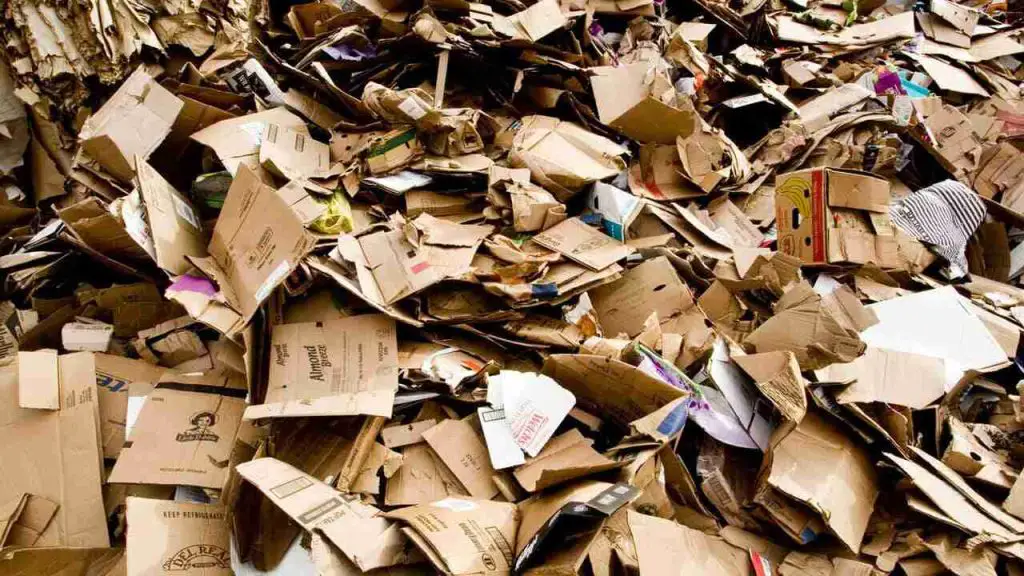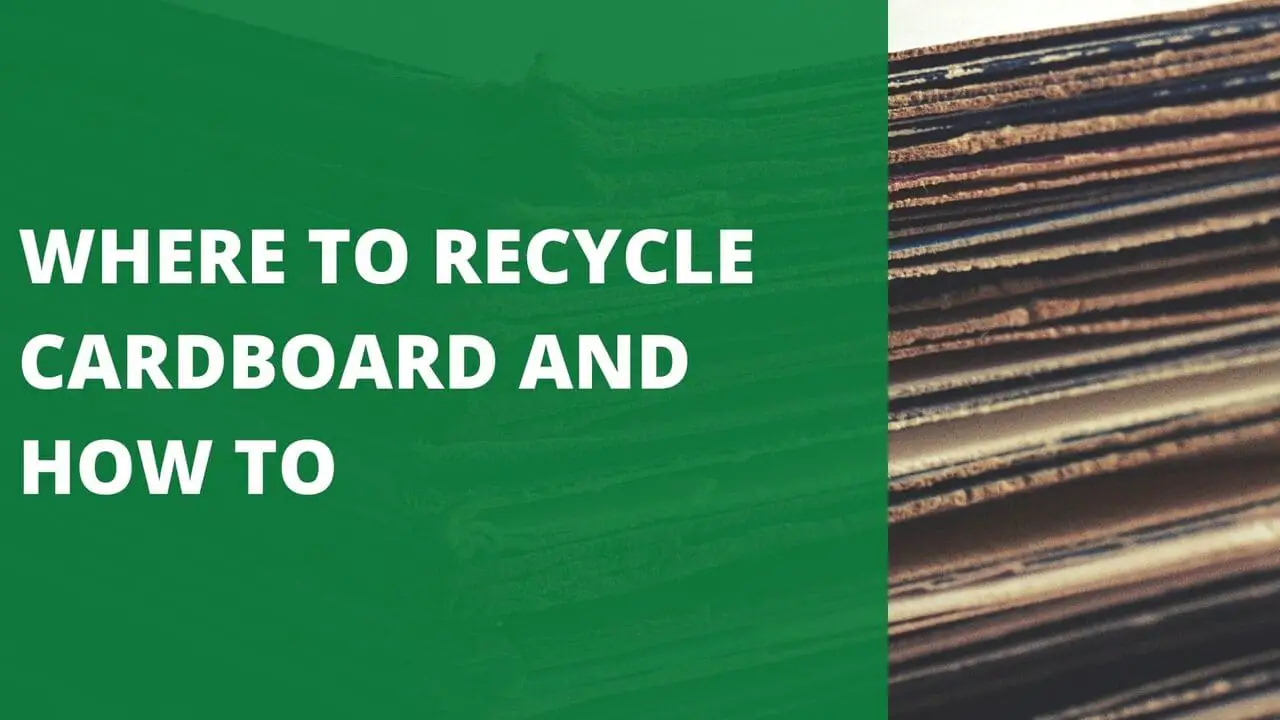If you are like most people, you probably have a few boxes of cardboard lying around your house. You may not know what to do with them, but don’t worry. We are here to help! This blog post will discuss the best ways to recycle cardboard.
Recycling is good for our environment as it reduces pollution and conserves valuable resources. Cardboard recycling is done as a way of keeping the environment clean.
The steps below explain the cardboard recycling system. So read on and learn how to ensure your old cardboard boxes are not in landfills!
Where to Recycle Cardboard and How to: Step-by-Step Guide To Harmlessly Recycle Cardboard

1. Collection
The collection is the first thing you must do to recycle cardboard. Recyclers and businesses pick up waste cardboard from specific collection points, typically garbage cans at stores, scrap yards, or commercial buildings that produce a lot of cardboard.
After being collected, recyclables are measured and transported to usually paper-based recycling facilities. The types of cardboard that can be recycled depend on how the cardboard was used or manufactured.
For example, waxed and coated cardboard or cardboard used for food packaging often cannot be recycled because they require a different recycling process.
2. Sorting
Once the corrugated boxes arrive at the recycling facility, they are sorted by materials. In most cases, there are two types: corrugated cardboard and boxboard.
The latter is thin, like those used for drink containers or cereal boxes. Sorting is important for corrugated boxes since paper mills manufacture different grades of materials based on recovered materials.
Corrugated boxes are bigger and stiffer, commonly used for packaging transport goods.
3. Shredding and Pulping
After sorting, the next step is shredding. Shredding breaks down cardboard paper fibers into minute pieces.
Once the material is finely shredded, it is mixed with water and chemicals to break down paper fibers and turn them into a slurry substance.
The pulping process turns the paper into a slurry, which is then combined with a new pulp. This generally comes from wood chips and helps the substance to solidify and become firmer.
4. Filtering, Conterminal Removal, and De-Inking
Put the pulp through a filtering process to remove any contaminants such as strings, tape, or glue.
After the pulp enters the chamber, it is put through a centrifuge-like process that eliminates contaminants like plastics and metal staples.
The lighter plastics float to the top, while the heavier metal staples fall to the bottom and are eliminated. The next process, de-inking, involves putting the pulp in a floatation device made up of chemicals that take away any form of dye or ink.
This step is called the cleaning process, cleaning the pulp thoroughly to ensure it is ready for the final processing stage.
5. Finishing for Reuse
After the pulp is cleaned, it is mixed with new production materials and spread out to dry on a heated conveyor belt.
As it dries, an automated machine presses out excess water and forms long rolls of solid sheets from the fibers called liner boards and mediums.
The liner boards are glued together in layers to make a new piece of cardboard. The corrugated sheet is sometimes used as the medium, which goes through two enormous metal rolls with teeth to give it ridges. Linerboards are then glued to the medium as a thin outer covering.
The liner boards and mediums are also taken to boxboard manufacturers, where the machine completes the manufacturing process by shaping it into a crease along pattern folds.
This then forms boxes that can be used for packaging or transporting products.
Where to Recycle Cardboard Safely
Now that you know all the steps in cardboard recycling, you might wonder where and how to recycle it. Fortunately, there are plenty of ways to eliminate unwanted cardboard boxes.
1. Local recycling center or drop-off location: Most communities have municipal recycling centers that accept paper and cardboard products for free. Alternatively, you can search for a drop-off location near you.
2. Local businesses: Many local businesses, like grocery stores or office supply stores, will take your cardboard for free and even pay you if they use it for packaging their products.
3. Private collection companies: Private collection companies are usually contracted by large corporations to collect and recycle their cardboard. You can find out if any of these companies offer services in your area by searching online.
4. Recycling events: Many cities hold regular recycling events, where you can bring old cardboard boxes to be recycled or reused.
Check with your city government or local environmental organization for information about upcoming dates and locations.
5. Online recycling services: A number of online services provide an easy and convenient way to recycle cardboard boxes. These can be great options if you need access to a local recycling center or drop-off location.
By following these tips, you can ensure your old cardboard boxes are recycled responsibly and help keep the environment clean. So, start recycling today and do your part to protect our planet!
The Bottom Line
Recycling cardboard is an important part of helping the environment. Through several steps, including pulping, filtering, and de-inking, used cardboard can be recycled into new products and reused for packaging or transporting items.
The best way to recycle your cardboard boxes is to take them to your local recycling center or drop-off location or contact a private collection company. Wherever you recycle, ensure the process is done responsibly and safely!
FAQs
Should I remove the tape from the cardboard before recycling it?
Try to recycle the materials when removing tape from cardboard boxes and wrapping paper. However, if there are loose strands of sticky tape, place them in the waste bin since they cannot be recycled.
Can I leave cardboard next to the bin?
No, you should never leave cardboard boxes next to the bin. Breaking down boxes and placing them inside recycling containers is important. This will ensure that all materials get sorted correctly for recycling.
Additional Contents

